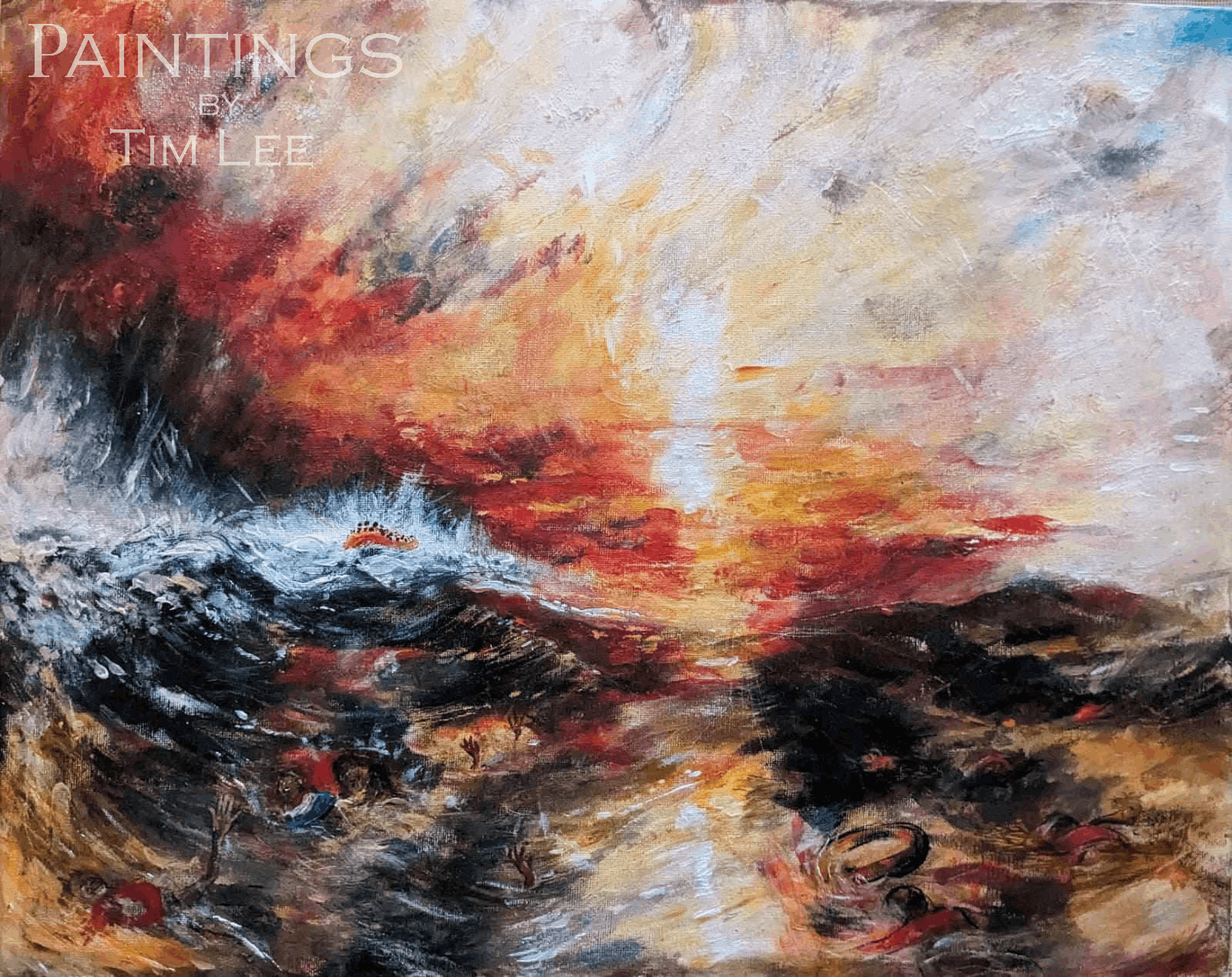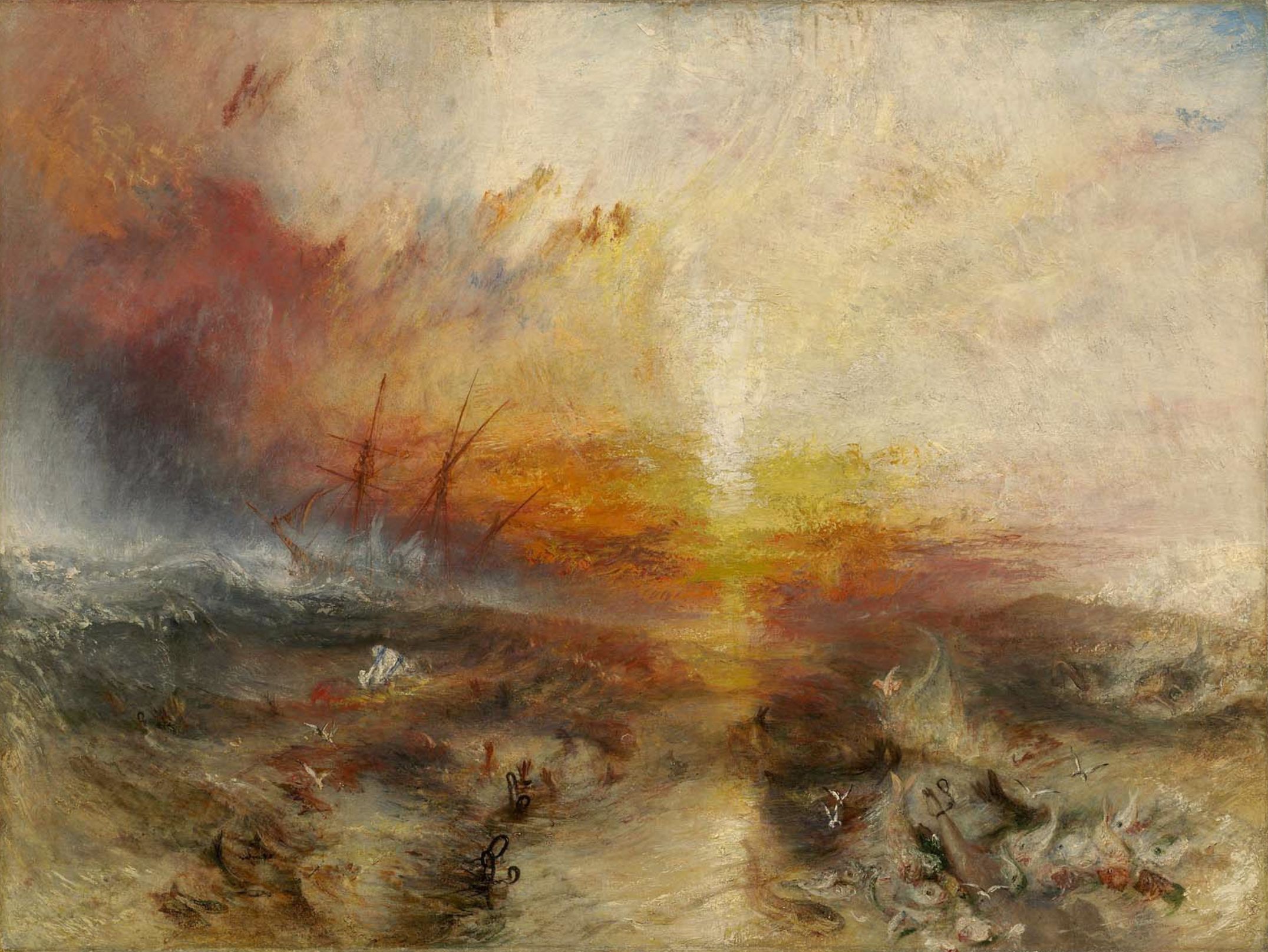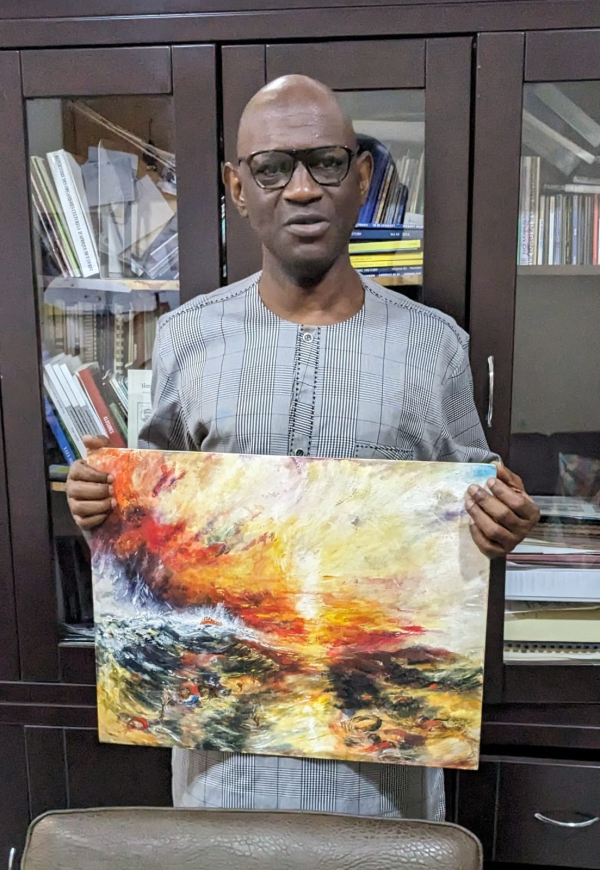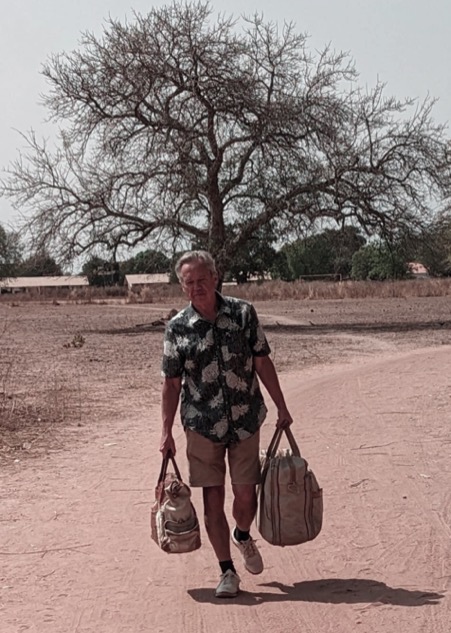
Can a painting speak louder than words...?
For many the Escape Roads, from squalor and hopelessness to the streets paved with solid gold, are
littered with tragedy and corpses. An inescapable certainty for many migrants. Equipped with hard
earned, borrowed or sometimes stolen cash and a mobile phone, migrants will often meet men with guns,
policemen with fines and guns, detention centre guards with guns, people smugglers, slave traders,
kidnappers, local bandits, starvation, extreme heat and extremely unreliable boat suppliers. Those who
fail in their ‘Backway’ journey to return home will often sneak back ashamed, unbalanced, angry and
beaten. Their companions who make it might send joyous WhatsApp videos from the lands of milk and honey.
But whether victorious or vanquished many will share the same deeply disturbing memories.
This visiting ‘Tubab’ will be sitting on a plane in a few days time gazing over The Sahara Desert from
his window seat, only a few hours to Gatwick Airport (possibly with a stowaway housed in the landing
gear), guessing at how many itinerants the Toyota pick-up trucks somewhere below have picked up. Just
part of a journey that might last some two or three years, or infinity, as the case maybe.
What a world it is.
Mindful of these pitiful circumstances this particular ‘Tubab’ was moved to pick up his paint brushes
and start on a painting called ‘Migrant Ship’. A testing exercise for a painter more comfortable
depicting dreamy subaqueous seascapes. Why? Why on earth would anyone want to paint a painting of
drowning migrants? Something wrong with you? Well I hope not …
In 1781 a slave ship named the ‘Zong’ threw 142 slaves overboard, following navigational errors,
dwindling water supplies, and a chronic overcrowding of human cargo. The acting captain claimed
insurance for the jettisoned slaves. These events are generally accepted as one of the darkest moments
in British involvement in the slave trade. In 1840 JMW Turner, one of Britain’s most renowned artists,
depicted the event in what has subsequently become one of his most renowned works, ‘Slave Ship’. He
exhibited his painting at The Royal Academy Exhibition and it caused a very big fuss. ‘Oh dear, we
really don’t want to know about all this, do we’, was the general response at the time.
Whatever…, it doesn’t really seem to me that much has changed over the last two hundred years. Though a
voluntary choice for ‘Backway’ migrants, rather than the ordered massacre of slaves by drowning, the
consequences are not a lot different. The resultant deaths of human cargo with the assistance of people
traffickers
‘Migrant Ship’ is, thus, a meagre reworking of Turner’s original with obvious deletions and contemporary
additions. An attempt to convey an image that troubles the conscience, that’s if any people traffickers
have a conscience.
Make of it what you will …
(Tim Lee has worked in, and been a regular visitor to, The Gambia for forty years. His work ‘Migrant
Ship’ will be housed on loan in The National Museum of The Gambia, under the curatorship of Hassoum
Ceesay, and will form part of an ongoing story of migration from West Africa. Tim would also like to
thank Osman Kargbo and Pap Saine at The Point Newspaper, and Omar Bah and Lamin Cham at The Standard
Newspaper.)



